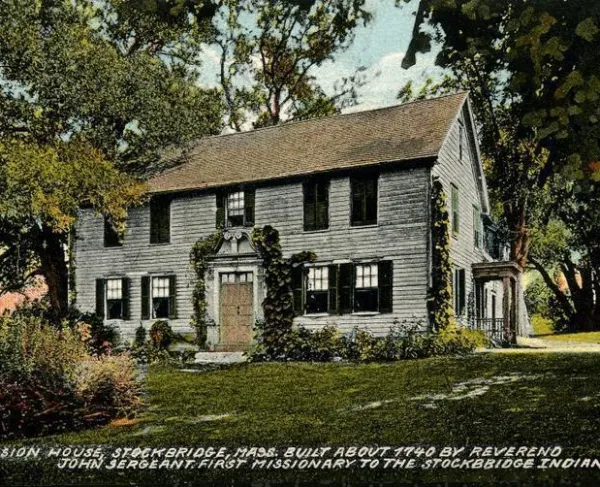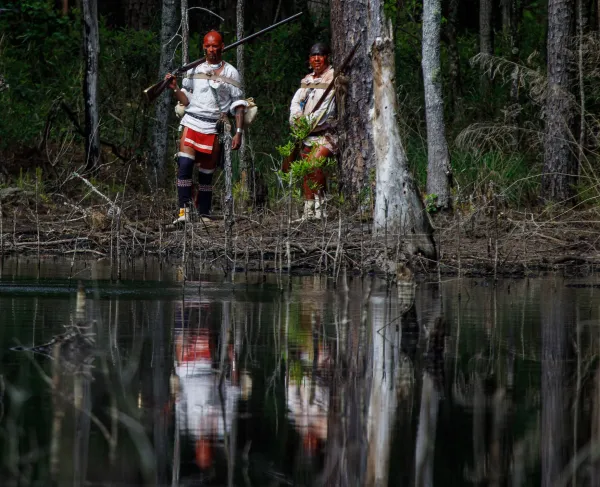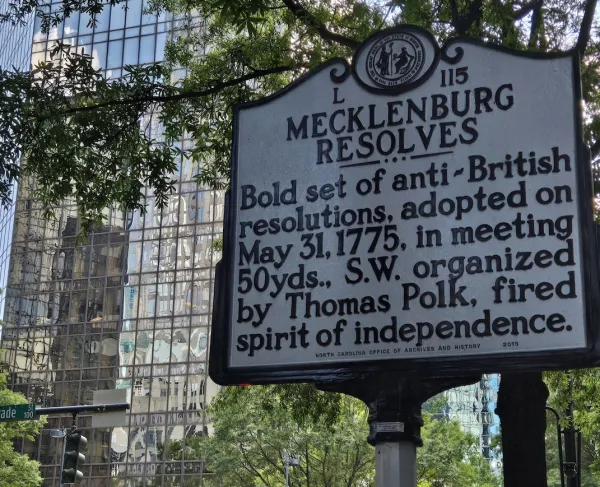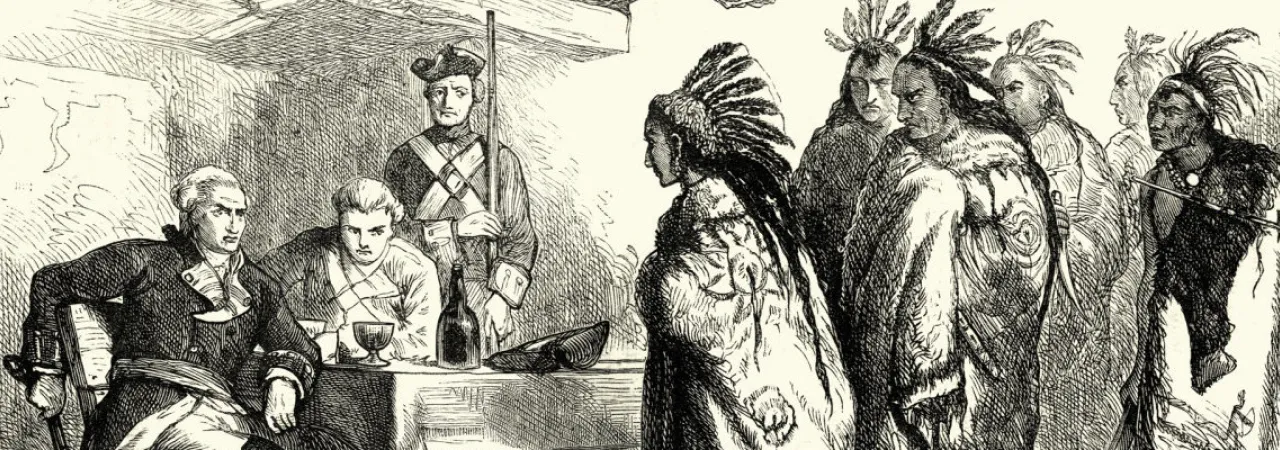
By the mid-eighteenth century, Great Britain began strategizing how to respond to the rebellious North American colonies. One key element of that strategy detailed how the British empire could leverage marginalized Native Americans to counter the anti-British mindset growing through America. By 1775, the expanding colonial footprint pushed Native tribes further west, past the Appalachian Mountains which created violent conflicts between the natives and the colonists, while demonstrating that the British were a more beneficial partner. After the French and Indian War, Great Britain sought to establish peace with the indigenous people by creating the Proclamation Line of 1763. This line intended to limit colonial development east of the line while allowing organized Native American tribes use of land west of the line. Many of these tribes were allied with France in the French and Indian War and now Great Britain worked to create a beneficial relationship through trade and peace. This line was one of the many grievances of the colonists as they continued to push west for large swaths of land as well as access to the Ohio and Mississippi Rivers.
During this period, the British government established Indian Agents in the colonies to foster good relations with the tribes. As war broke out between the colonies and the Crown, Royal officials leaned on these agents to use their influential relationships to form an alliance between the Natives and the British military. Promises of land and tribute were made all along the frontier, and the British began to play on the inherent fear that many on the frontier had of Indian attacks. Patriot leaders also attempted to make alliances with the tribes, but most of these colonial legislatures had pushed for aggressive western expansion into tribal lands. Few tribes would align themselves with the Patriot cause.
Though both sides made it a goal to court the favor of Native tribes, Indigenous influence and numbers (especially warriors) were much diluted. By the American Revolution, the population of Native Americans in the colonies was approximately 600,000. This was a steep decline of approximately six million Native Americans in 1600. Of the 600,000, only a some were warriors or able-bodied males who could fight. Most tribal members were elderly, young, or women who traditionally did not fight. The fear of settlers of Native American raids was mostly psychological warfare and one the British determined to fully leverage.
In the southern theater of the war, the British successfully garnered favor with Native American tribes. The vast majority of the Cherokee tribes in the south allied with the British. This was mostly due to their desire to protect their land along the western borders of the Carolinas. They had little trust in the colonial legislatures and did not believe the upstart Patriots could overcover Great Britain’s military power. In the summer of 1776, the “Cherokee War” erupted along the western border of the southern states, wreaking havoc on Patriot settlements. The British encouraged the Indian raids and assisted with supplies and treasure. The Patriot legislatures and militias reacted aggressively and a year later many Cherokee villages were burned, and tribes pushed westward. Nearly 2,000 Cherokee died during the year-long war. The lack of British military presence in South Carolina in 1776 did not help and allowed the state legislatures to focus on defeating the Cherokee.
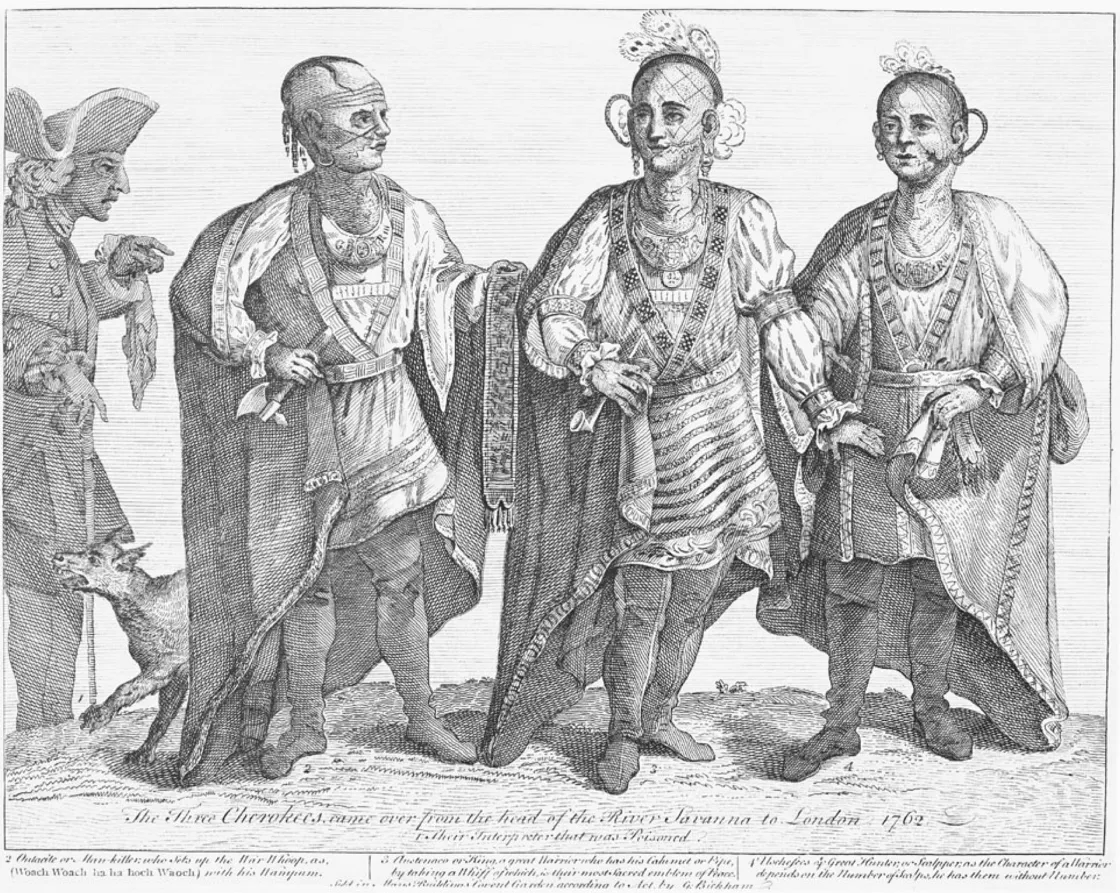
The Choctaw and Chickasaw also loosely allied with Great Britain. Though limited, these tribes mostly assisted the British in their war with Spain along the Gulf of Mexico and the Mississippi River. The Chickasaw saw action along the Mississippi River around Natchez while the Choctaw assisted near Mobile and Pensacola. The most important factor for all these tribes was trade and access to European goods.
Some Native Americans joined Loyalist militia groups. These mostly consisted of members of settlements that were in the more developed regions of the south. Some mixed-race Native Americans, who at times were not accepted by their Native American relatives or their white relatives, joined organized Loyalist units. In 2022, one set of human remains found on the Camden battlefield is believed to be Native American and belonging to a Loyalist militia unit.
One of the few tribes to ally with the Patriots was the Catawbas. Generally, the Catawba people were peaceful and many, such as King Hagler (who is considered one of the founders of Camden, South Carolina) worked with colonial leaders to establish trade and peaceful coexistence. Though some did join colonial militias, most tribes stayed clear of confrontation and showed their support for the Patriots by not supporting the British.
Though Great Britain worked hard to use their Native American allies in the war effort, the overall success was limited. Most of the influence the tribes had was psychological. Several thousand warriors attacked southern settlements and hundreds joined Loyalist militias, their influence on the outcome of the war was minimal. Great Britain sadly turned their backs on many of their Native allies when they signed the Treaty of Paris ending the war. Great Britain ceded all British territory east of the Mississippi and south of Canada. The tribes—once loyal to the Crown—had no say in the treaty, and their land was now open for American migration and settlements. Blocking this incursion had been one of the main reasons many tribes sided with the British. The result was instant bloodshed and the continued decimation of Native American settlements along the western side of the Appalachian.
Many of these tribes continued to push back against the new American government. Constant conflict consumed many of the Native and White settlements in the new southern territories, as seen in the Creek War, Seminole War, and the War of 1812. By the time Florida joined the United States in 1845, many of the southern tribes were either decimated or were forcibly moved westward by settlers and the United States government. This resulted in more warring and Native American displacement across the plains and the United States Southwest.

